ARRIS WPS870G Wireless 802.11g High Speed AP Router User Manual Pirnt Server
ARRIS Group, Inc. Wireless 802.11g High Speed AP Router Pirnt Server
ARRIS >
Contents
- 1. Users Manual Part 1
- 2. Users Manual Part 2
Users Manual Part 1
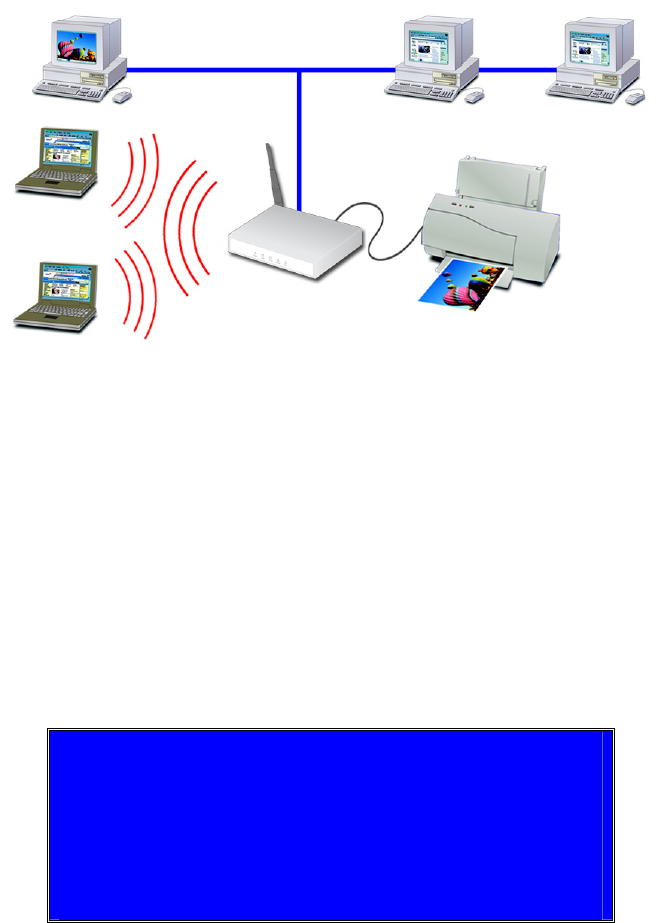
W
Wi
ir
re
el
le
es
ss
s
P
Pr
ri
in
nt
t
S
Se
er
rv
ve
er
r
U
Us
se
er
r
G
Gu
ui
id
de
e
Copyright 2003. ALL RIGHTS RESERVED
Document Version: 1.1
P/N: 9570F20201
All trademark and trade names are the properties of their
respective owners.

Table of Contents
Chapter 1 Introduction 1
Features......................................................................................................................... 1
Safety Instructions ........................................................................................................ 2
Package Contents.......................................................................................................... 3
Models ..........................................................................................................................3
LED Indicators ............................................................................................................. 4
Diagnostic Push Button ................................................................................................ 5
Chapter 2 LAN Installation 6
Procedure...................................................................................................................... 6
Chapter 3 Wireless Print Server Configuration 8
Overview ...................................................................................................................... 8
Using the Windows Wizard.......................................................................................... 8
Chapter 4 Client PC Configuration 11
Overview .................................................................................................................... 11
Windows Peer-to-peer Printing .................................................................................. 13
Windows SMB Printing.............................................................................................. 20
Windows with Server-based Print Queues ................................................................. 21
Macintosh (AppleTalk)............................................................................................... 22
Macintosh OS X ......................................................................................................... 23
Chapter 5 BiAdmin Management Utility 24
Requirements.............................................................................................................. 24
Installation .................................................................................................................. 24
Operation .................................................................................................................... 24
Chapter 6 Web-Based Management 38
Overview .................................................................................................................... 38
Preparation.................................................................................................................. 38
Connecting to the Wireless Print Server..................................................................... 39
Configuration Screens ................................................................................................ 39
Chapter 7 Special Features 47
Overview .................................................................................................................... 47
Internet Printing Protocol (IPP) .................................................................................. 47
Internet Mail Printing ................................................................................................. 52
Printing through the Internet....................................................................................... 56
SNMP ......................................................................................................................... 57
Chapter 8 Troubleshooting 58
Overview .................................................................................................................... 58
Page i
Hardware & LAN Problems ....................................................................................... 58
AppleTalk (Macintosh)............................................................................................... 59
Windows Printing Problems ....................................................................................... 61
Unix Troubleshooting................................................................................................. 66
Appendix A Specifications 67
General Specifications................................................................................................ 67
Protocol Support......................................................................................................... 68
Feature Support........................................................................................................... 68
Appendix B Windows Server Configuration 69
Windows NT4.0 Server .............................................................................................. 69
Windows 2000/2003 Server ....................................................................................... 70
Appendix C Unix Systems 71
Overview .................................................................................................................... 71
Wireless Print Server IP Address Configuration ........................................................ 71
Other Wireless Print Server Configuration................................................................. 71
LPD Configuration ..................................................................................................... 72
Appendix D NetWare 77
Overview .................................................................................................................... 77
Creating an NDPS Manager Object............................................................................ 77
Creating an NDPS Printer Agent................................................................................ 78
Page ii

Page 1
1
Chapter 1
Introduction
This chapter provides an overview of your Wireless Print Server's features.
Features
Congratulations on the purchase of your new Wireless Print Server. Your Wireless Print Server
was designed to provide a simple and efficient network printing solution. It is packed with
features, including:
Wireless LAN Support. Wireless stations supporting the IEEE 802.11b standard can
interoperate with the Wireless Print Server. Both LAN and WLAN users can print to the
attached printer or printers.
Versatility. The Wireless Print Server supports up to four protocols: TCP/IP, SMB
(Service Message Block), AppleTalk (EtherTalk), and NetBEUI. It features an Ethernet
interface port and operating system support includes Unix, NetWare (NDPS LPR printing),
and Microsoft Windows.
Easy Installation. The Wireless Print Server makes adding printers or plotters to your
network simple.
Easy Setup. A number of utility programs are supplied to simplify setup. For Windows
95/98/Me/NT/2000/XP users, the BiAdmin program makes it easy to configure the
Wireless Print Server for a variety of network and server configurations.
Web-based Interface. The Web-based interface provides an easy method of
configuration in TCP/IP networks to every model.
Compact Size. This allows the Wireless Print Server to be used even where space is
limited.
Remote Management Tools. A variety of software tools are provided. In most
environments, both the Wireless Print Server and attached bi-directional printers can be
configured remotely.
SNMP Support. The Wireless Print Server can act as a SNMP agent, with it own MIB.
This allows TCP/IP users to monitor, configure and troubleshoot the Wireless Print Server
using their existing SNMP management tools.
Internet Printing Protocol (IPP) Support. The Wireless Print Server can act as an
IPP (Internet Printing Protocol) Server, allowing clients, suppliers, colleagues and others
to print to your printer from anywhere on the Internet. Windows IPP Client software is
also supplied.
Refer to the "Protocol Support" and "Feature Support"
tables in Appendix A for details of which models
support the different features.

Safety Instructions
For your own safety, and to protect your Wireless Print Server, please observe the following
safety advice.
1. Unplug this device from its power source before cleaning. Use only a slightly dampened
cloth for cleaning. Do not use liquid or aerosol cleaners.
2. Avoid using this product near water. Exposure to water poses an electric-shock hazard.
3. Do not place the Wireless Print Server on an unstable surface. The device may fall causing
serious damage to the device.
4. This device should only be used with the power supply type specified on the marking label.
If you are not sure of type of your local power supply, consult your dealer or the local
power company.
5. Do not pinch, crimp or otherwise damage the power cord. If exposed to foot traffic,
ensures that the cable is properly shielded and does not pose a tripping hazard.
6. If using an extension cord, makes sure the total ampere rating of the products using the
cord does not exceed the extension cord's ampere rating.
7. Do not attempt to service this device, as opening or removing casing may expose you to
dangerous voltage points or other risks. Refer all servicing to qualified service personnel.
8. The Wireless Print Server should be serviced by qualified service personnel under the
following conditions:
• The power cord is damaged or frayed.
• Liquid has been spilled onto the product.
• The product has been exposed to rain or water.
• The product does not operate normally in accordance with the operating instructions.
• The device has been dropped or the casing has been damaged.
Page 2
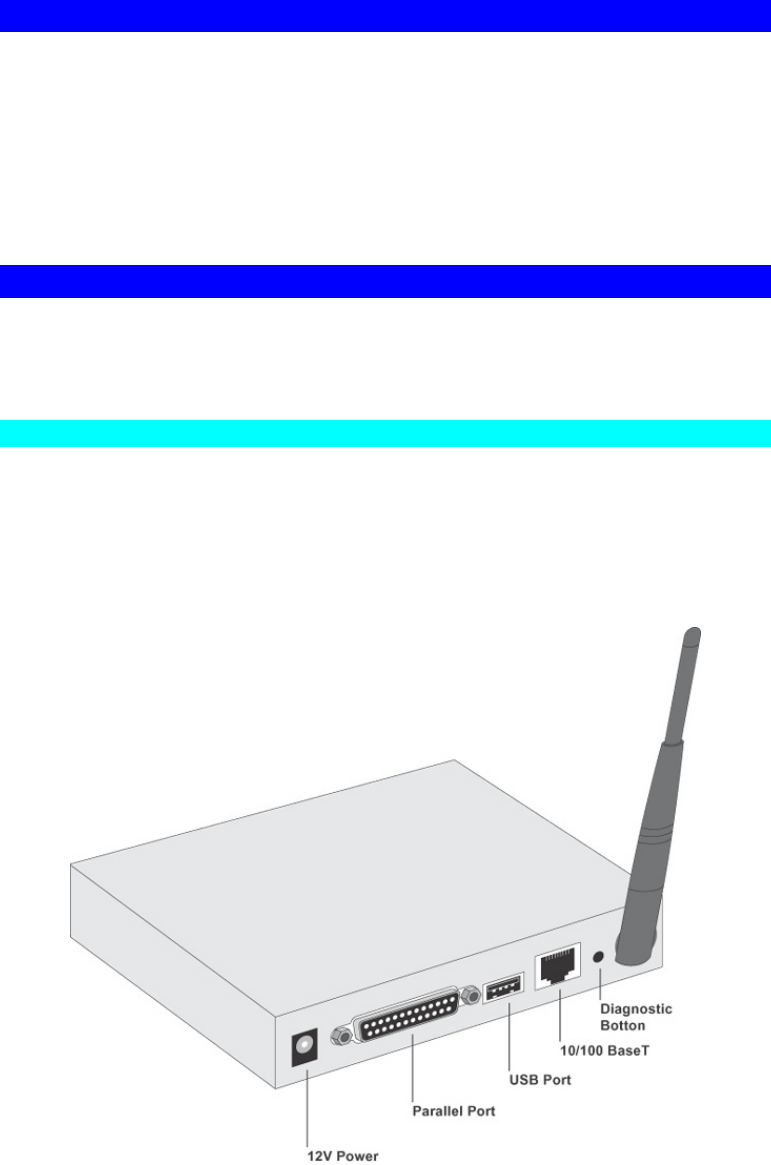
Package Contents
You should find the following items packaged with your Wireless Print Server. If any items are
missing, contact your dealer immediately.
• The Wireless Print Server
• Power Adapter
• One CD-ROM containing all support programs and this manual
• Quick Install Guide
Models
This manual covers the following Wireless Print Server models. Details of the LEDs and
connections are in this Chapter. Further details of each model are contained in Appendix A -
Specifications.
WPS870G Wireless Print Server
• 1 USB Printer Port
• 1 Parallel Printer Port
• IEEE 802.11b Wireless Station
• 10/100BaseT LAN connection
Note: The parallel port is Port 1, the USB port is Port 2.
Page 3

LED Indicators
All models have four LED indicators on the top. The Error LED is red. The ACT LED is green.
The LED indicator modes are described in the following table.
LED Color(s) Activity Desc.
Status Green + Orange Off Power Off
Green On Device Ready
Orange On Error
Ethernet Green + Orange Off No Ethernet Link
Green On Ethernet Link
Green Blinking Traffic
Orange Blinking Collision
Wireless-G Green Off No Wireless Link. (if wireless
initiate failed)
Green On 802.11g module is functional.
Green Blinking Sending/Receiving
Parallel Port Green + Orange Off No printer is connected
Green On Printer is connected.
Green Blinking Sending data
Orange On Problem on printer
USB Port Green + Orange Off No printer is connected
Green On Printer is connected.
Green Blinking Sending data
Orange On Problem on printer
Page 4

Diagnostic Push Button
The Wireless Print Server is fitted with a Diagnostic Push Button. The button is recessed; a pin
or paper clip can be used to press it. This button has 2 functions:
• Restore the factory default settings
• Print a test page containing all current settings.
To restore the factory default settings:
1. Turn the Wireless Print Server OFF.
2. Press and hold the diagnostic button. While pressing the button, switch the Wireless Print
Server ON.
3. If you continue pressing the button for 10 seconds, a diagnostic page will be printed,
showing the new (default) settings.
To generate a Diagnostic print out
1. Ensure that both the Wireless Print Server and the printer attached to port 1 are ON.
2. Press the diagnostic button, and hold it in for 2 seconds.
3. The test page, containing the current settings, will be printed.
Note:
PostScript printers are unable to print this page. If you have a PostScript printer on Port 1,
the test page will not be printed.
Page 5
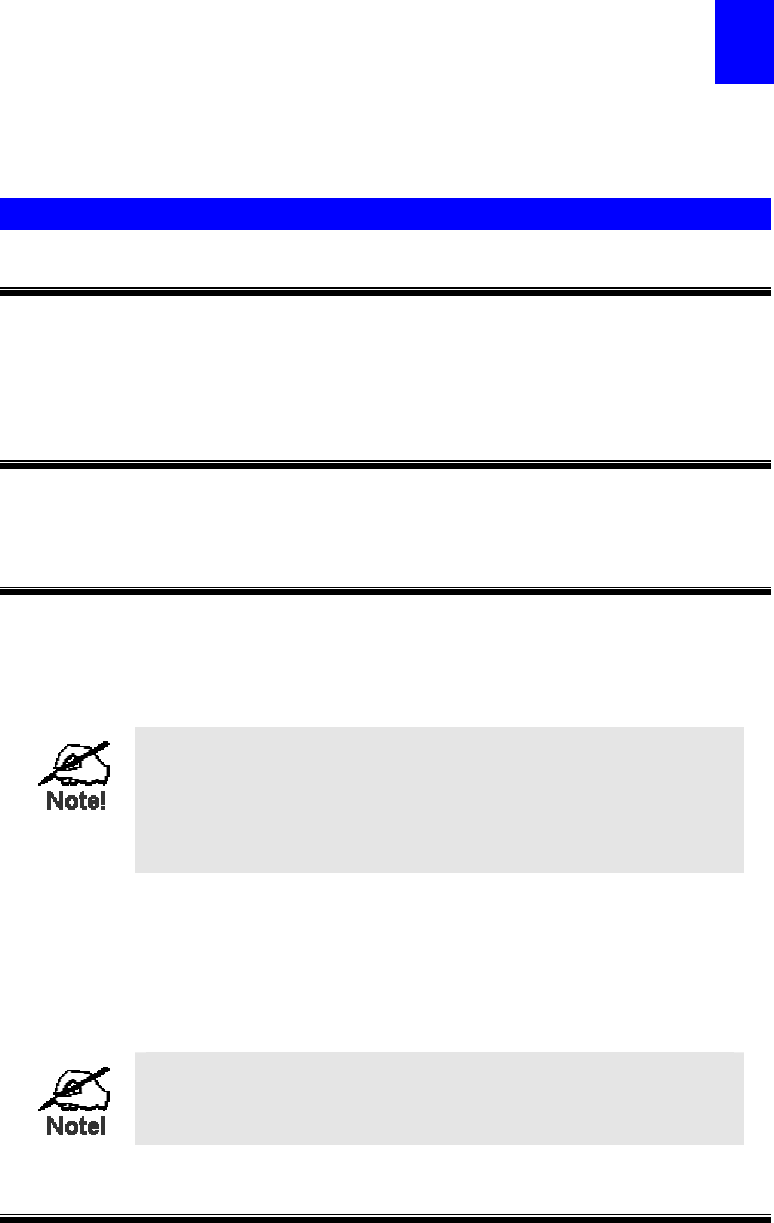
Page 6
Chapter 2
LAN Installation
This chapter describes how to install the Wireless Print Server in your Local Area
Network.
2
Procedure
1. Preparation
• Ensure the power is OFF. Do not connect the Wireless Print Server while power is On.
• Find the Default Server Name for your Wireless Print Server. The Default Server Name is
shown on a sticker on the base of the device. It consists of 8 letters and/or digits. Record
this name; it may be needed during configuration.
2. Connect the Printer or Printers
Connect the printer or plotter cable(s) to the appropriate port(s) on the Wireless Print Server
unit. Parallel port cables should be less than 3 meters long.
3. Connect to your Network
Wired Network Interface
Connect the network cable to the 10/100BaseT LAN connector on the Wireless Print Server.
• To use the LAN interface, the LAN cable needs to be inserted
BEFORE powering ON
• In the default Wireless "Infrastructure" mode, connecting a LAN
cable will disable the Wireless interface. To use both the LAN
and Wireless interfaces, the Wireless mode must be changed to
"Ad-hoc".
Wireless Network Interface
Ensure your Access Point is compatible with the Wireless Print Server's default settings:
• SSID: ANY
• WEP: Disabled
Because the default Wireless mode is "Infrastructure", you cannot
configure the Wireless Print Server via the Wireless interface unless
you have an Access Point.
4. Power Up
Plug in the power adapter cable and power up. Start-up will take only a few seconds.
Use only the Power Supply unit provided with the device. Power Supply units for
different models are not interchangeable.

LAN Installation
5. Check the LEDs
• The Red Error LED should flash, then turn Off. When the Error LED goes off and the
ACT LED remains lit or flashes, the Wireless Print Server is ready.
• If using the LAN interface, the LAN LED should be ON.
If using the Wireless interface, the WLAN LED should be ON.
Page 7

Page 8
3
Chapter 3
Wireless Print Server
Configuration
This chapter provides an overview of the configuration process.
Overview
The Wireless Print Server is designed to support many different platforms, and the
configuration required would depend upon the environment in which it is installed.
• The Wireless Print Server usually requires configuration, but if there's a DHCP server on
your network, then the device is just plug-and-play. A Windows-based setup Wizard is
also provided on the CD-ROM to simplify this task.
• PCs wishing to use the printer attached to the Wireless Print Server always require
configuration. See Chapter 4- Client Configuration for details.
• If you wish to use a queue-based printing system using Windows NT Server/Windows
2000/Windows XP, the Network Server must be configured as detailed in Appendix B -
Windows Server Configuration. However, it is not necessary to use a Network Server-
based queue; client PCs can print directly to the Wireless Print Server using the Peer-to-
peer Printing installed by the User setup option on the CD-ROM.
Configuration Methods
The following methods are available to perform the required Print Server configuration:
• Windows-based Wizard - see below for details.
• BiAdmin management utility program - see Chapter 5 for details.
• Web-based setup - see Chapter 6 for details.
Advanced Configuration and Management
The BiAdmin management utility is provided for advanced configuration and management.
This program is installed by default when the Administrator install option is chosen. See
Chapter 5 for details on using BiAdmin.
Using the Windows Wizard
The Windows-based Wizard is supplied on the CD-ROM, and runs on Windows 95, 98, NT4.0,
ME, Windows 2000 and Windows XP.
Using this Wizard is the recommended method to configure the Print Server.
It can be used configure the Wireless Print Server for your Network environment, even if the
Print Server does not have a valid IP address.
Procedure
1. Insert the supplied CD-ROM into your drive. If the setup program does not start
automatically, run SETUP.exe in the root folder.
2. On the first screen, shown below, click Setup Wizard.
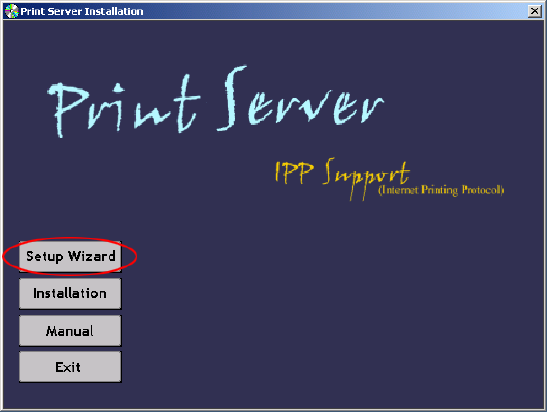
Figure 1: Wireless Print Server Screen
3. Click Next on the first screen of the Wizard, to view a list of Wireless Print Servers on
your LAN.
4. Select your new Wireless Print Server, then click Next to continue.
5. Enter the required data on the following screen.
• Name of the Print Server can be changed if you wish.
• Comment is optional.
• Select or enter the Workgroup name for this Wireless Print Server.
6. Click Next to configure the TCP/IP Screen:
• Select Obtain IP Address automatically if your LAN has a DHCP Server, otherwise
select Fixed IP Address.
• For Fixed IP Address, enter an unused address from the range used on your LAN, or
click the Suggest New Values Button.
Use the same Network Mask and Gateway as PCs on your LAN.
7. On the Wireless Screens, the settings should be set to match your other Wireless Stations.
For details about each setting, refer to the following section Wireless Configuration.
8. Click Finish to save the data to the Wireless Print Server.
Note: To install the Wizard on your PC, use the "Installation" option.
If the desired Wireless Print Server is not listed:
• Check all cables to the Wireless Print Server.
• Check the Wireless Print Server's LEDs:
• The Error LED should be OFF and the ACT LED should be ON or flashing.
• The LAN LED should be ON.
• Check that your PC and the Wireless Print Server are on the same LAN segment. (If you
don't have a Router or Gateway on your LAN, you only have 1 segment.)
• Check that your PC has either the TCP/IP or NetBEUI network protocols installed. See
Checking your Network Protocols on page 12 for details.
Page 9
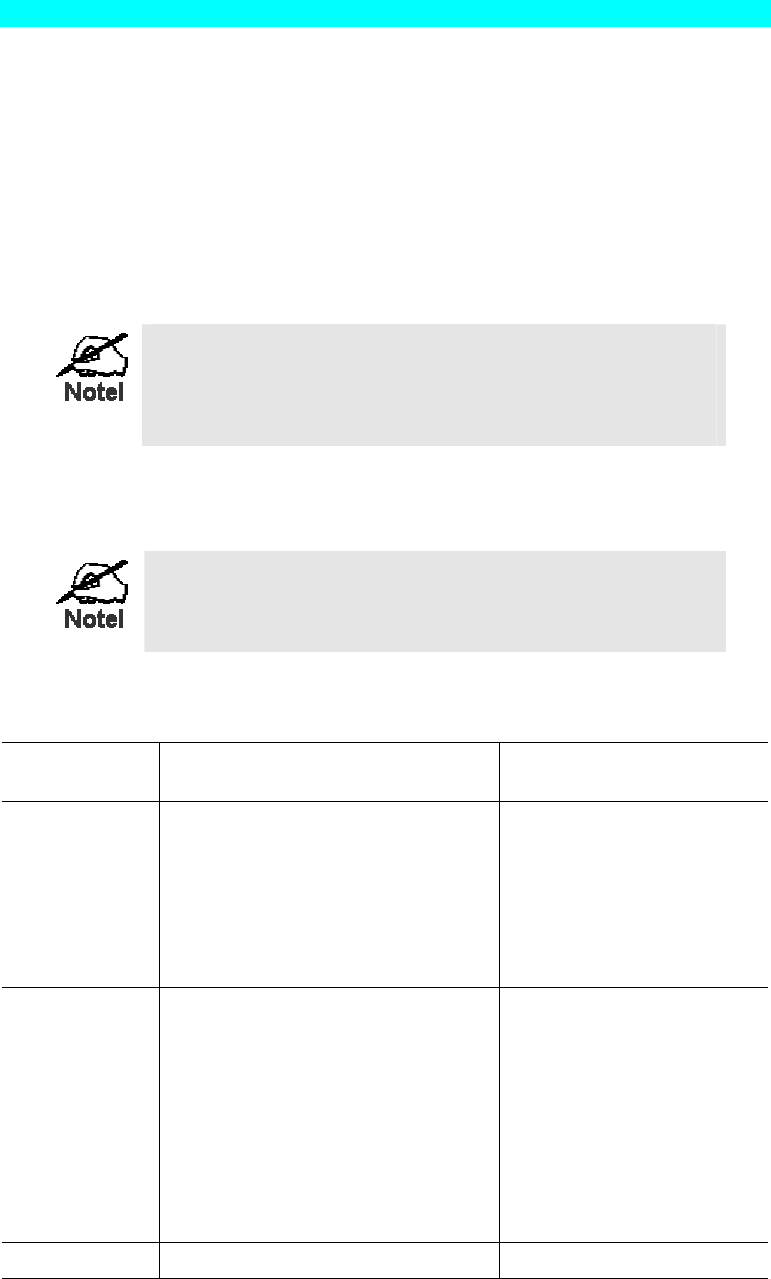
Wireless Configuration
Wireless Mode
The Wireless Print Server is a Wireless station, NOT an access point. Like other Wireless
stations, they have 3 modes:
• 802.11 Ad Hoc mode - no Access Point is used, Wireless stations communicate directly
with each other. This is the current standard.
• Ad Hoc mode - no Access Point is used, Wireless stations communicate directly with each
other. This is the older standard, and requires that each Wireless station is set to use the
same Channel. (In 802.11 Ad-hoc mode, a Wireless station will scan all channels to find
compatible ad-hoc groups it can join.)
Of the two (2) Ad-hoc modes, "802.11 Ad Hoc" mode is
recommended. If your Wireless LAN Card doesn't provide "802.11
Ad Hoc" mode, try "Ad Hoc" mode on the PC and "802.11 Ad
Hoc" on the Wireless Print Server. If this fails, select "Ad-hoc"
mode on the Wireless Print Server.
• Infrastructure (Default) - all Wireless stations connect to the Access Point. This allows
connection to both other Wireless stations and the wired LAN.
To use both the LAN and Wireless interfaces, the Wireless mode
must be set to "Ad-hoc".
In "Infrastructure" mode, connecting a LAN cable will disable the
Wireless interface.
Required Configuration
Ad-hoc Mode
802.11 Ad-hoc Mode
Infrastructure Mode
SSID If 802.11 Ad Hoc mode is configured,
the Wireless Print Server will join any
group with the same SSID.
If there's no Ad Hoc group available on
the environment, the Wireless Print
Server will create the group by the
SSID number value it configured.
Must match the Access Point.
Channel In Ad Hoc mode, the Wireless Print
Server will join any group with the
same Channel number.
In 802.11 Ad Hoc mode, the Print
Server will scan all Channels to look
for compatible groups it can join. If
there is no existing Hoc group
available, the Wireless Print Server
will create the group using its own
Channel number.
Access Point sets the Channel
used.
Wireless stations
automatically locate the
correct channel.
WEP Settings Must match the other Wireless stations. Must match the Access Point.
Page 10

Page 11
Chapter 4
Client PC Configuration
The chapter details the client configuration required on LAN clients to use the printer
or printers attached to the Wireless Print Server.
4
Overview
Before performing client configuration, the Wireless Print Server must be installed on your
LAN, and configured as described in Chapter 3. Both the Wireless Print Server and the
attached printer must be powered ON.
Printing Methods
The Wireless Print Server supports a number of printing methods:
• Peer-to-peer Printing means that the print jobs are stored (queued) on your PC, and sent
directly to the Wireless Print Server when it is available.
• Server-based Print Queue means that all print jobs are stored (queued) on the Network
Server (e.g. Windows NT/2000) and then sent to the Wireless Print Server. This allows the
Network Administrator to modify the Print Queue. For example, an important job can be
moved to the head of the queue.
• Windows SMB printing is a Microsoft standard for using a "Network Printer". No
additional software needs to be installed on your Windows PC, and printing from MS-
DOS programs is supported. However, because the Wireless Print Server can not store
files, large print jobs may cause problems.
• AppleTalk is also supported, and normally no configuration of the Wireless Print Server is
required. See the Macintosh section of this chapter for details of client configuration.
Which printing method should I use?
• If using Windows 95, 98, NT, Me, 2000, or XP, the easiest method to use is Peer-to-peer
Printing.
• If using Windows, and you need to print from MS-DOS programs, or you don't wish to
install additional software, use SMB.
However, SMB is not suitable for large, complex documents, so if you need this as well as
MS-DOS printing, you should install BOTH Peer-to-peer Printing and SMB printing. MS-
DOS programs can use the SMB printer, Windows programs should use Peer-to-peer
Printing.
• If your LAN has Network Servers (e.g. Windows NT, Windows 2000 Server) use the
method advised by your Network Administrator. The Wireless Print Server can print via a
queue located on a Network server, if desired.
• Unix users - refer to the Appendix C.
• Macintosh users - refer to the Macintosh section of this chapter.
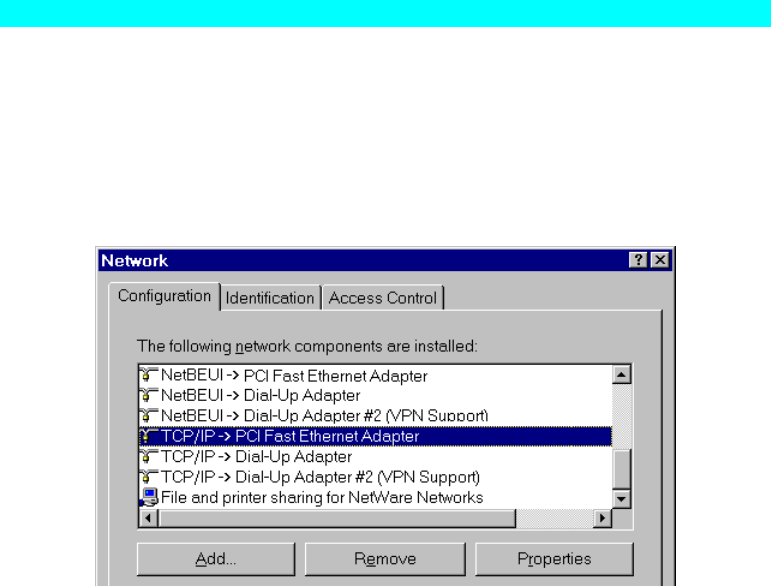
Checking your Network Protocols (Windows 9x)
Your PC must have EITHER the TCP/IP or NetBEUI protocols installed. (All versions of
Windows after Windows 95 have TCP/IP installed by default.)
• If using the Peer-to-peer Printing, the installation program will check this for you.
• If using other methods, you must check manually, as follows:
1. Select the Settings - Control Panel - Network option on the Start Menu. You should see a
screen like the one following:
Figure 2: Network Configuration
• The top line in the list (NetBEUI -> PCI Fast Ethernet Adapter) indicates that the
NetBEUI protocol is installed on this PC. Your PC will show the name of the your
Network card rather than "PCI Fast Ethernet Adapter".
• The highlighted line (TCP/IP -> PCI Fast Ethernet Adapter) indicates that TCP/IP is
installed. Your PC will show the name of the your Network card rather than "PCI Fast
Ethernet Adapter".
2. If neither line is present:
• Install the NetBEUI protocol by selecting Add - Protocol - Microsoft - NetBEUI - OK.
You may be prompted for your Windows CD-ROM.
• If required, you can also install TCP/IP. However, depending on your LAN
environment, TCP/IP may require further configuration.
3. If either protocol is already installed, proceed with installation.
Page 12
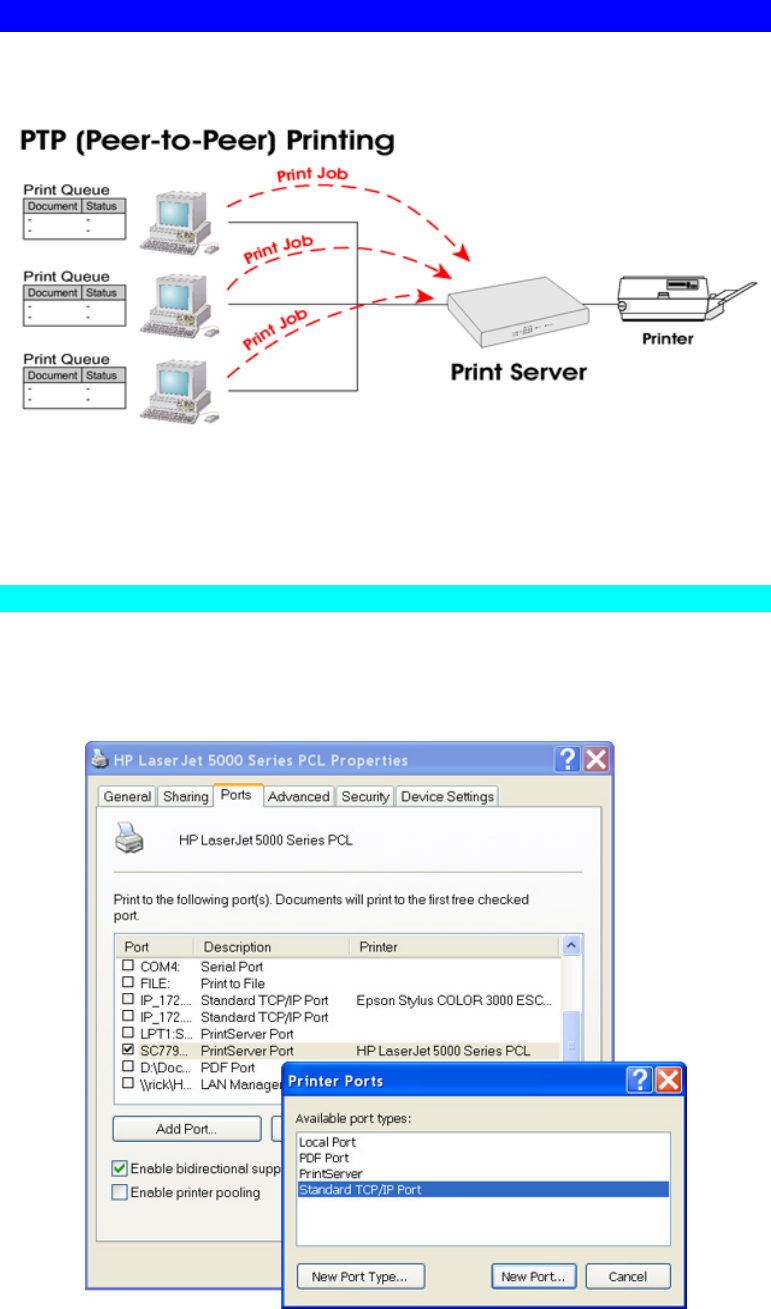
Windows Peer-to-peer Printing
With this printing method, print jobs are stored (queued) on your PC, and then sent to the
Wireless Print Server when it is available.
Figure 3: Peer-to-Peer Printing
Windows 2000 & XP require no additional software.
For other versions of Windows, the supplied PTP (Peer-to-Peer) Printer Port software must be
installed on each PC.
Windows 2000/XP Setup
The recommended printing method is to use LPR, as follows:
1. Open your Printers folder, right-click the desired printer and select Properties.
2. Select the Ports tab and click the Add Port button.
Figure 4: Printer Ports Screen
Page 13
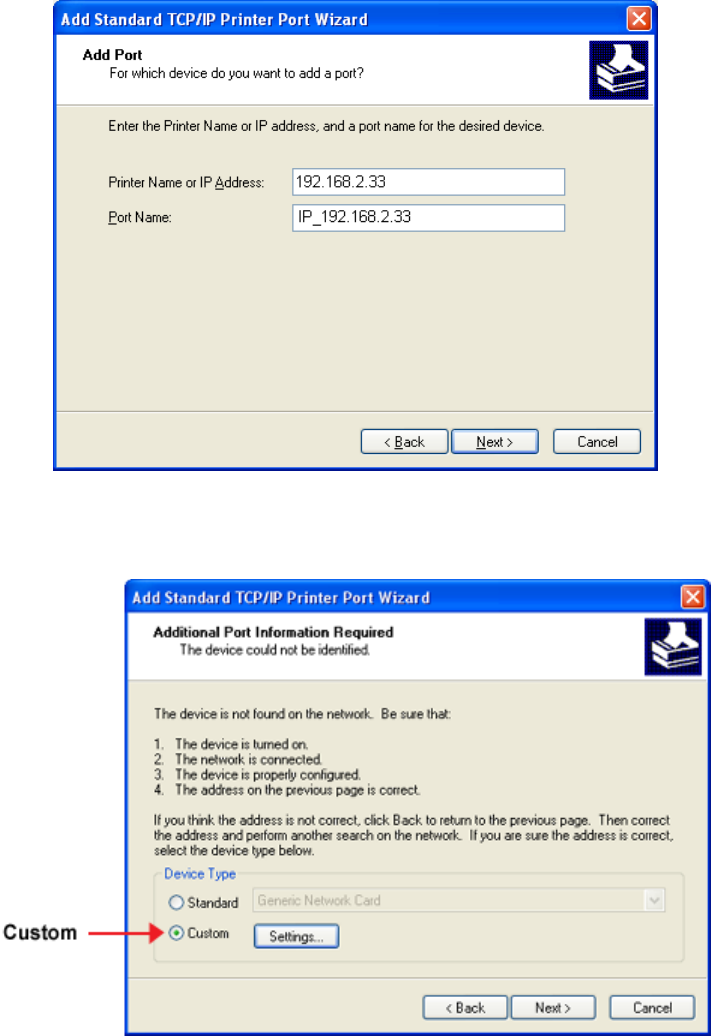
3. Choose Standard TCP/IP Port, then click New Port.
Figure 5: Add Port Screen
4. On the Add Standard TCP/IP Printer Port screen above, enter the IP Address of the Print
Server in the Printer Name or IP Address field, then click Next.
Figure 6: Additional Port Information Screen
5. On this screen, select Custom, and click the Settings button.
Page 14
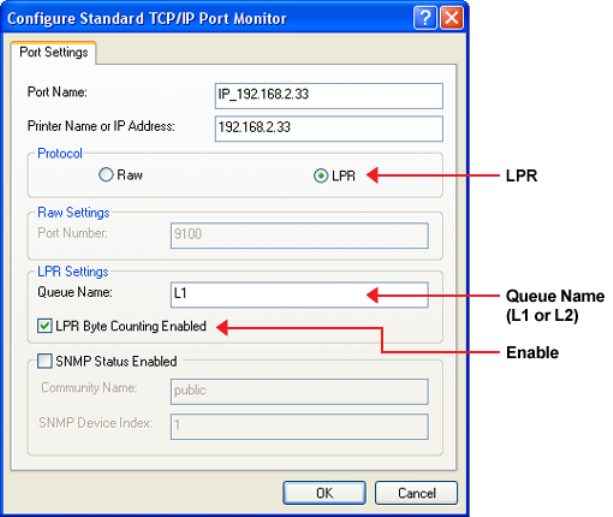
Figure 7: Port Settings Screen
6. On the Port Settings screen, shown above:
• Select LPR in the Protocol section
• Enter a Queue name (L1 for Port 1, L2 for Port 2 if the Wireless Print Server has 2
printer ports)
• Ensure the LPR Byte Counting Enabled setting is Enabled.
• Click OK to confirm your changes and close this screen.
7. Follow the prompts to complete the Wizard.
Page 15
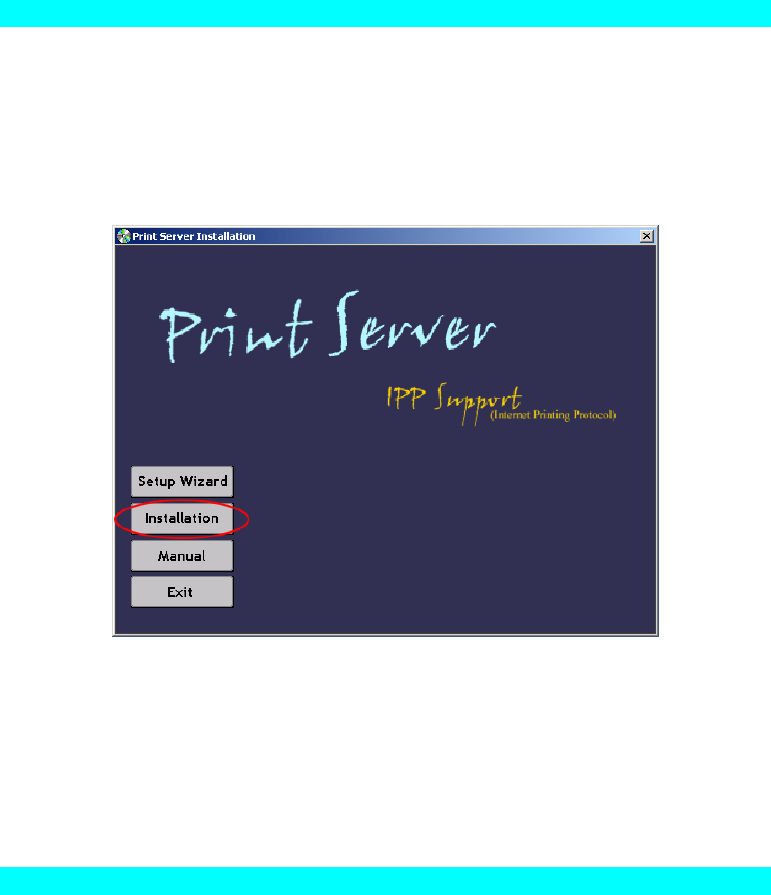
Windows 9x/ME Setup
Before performing the following procedure, the Wireless Print Server must be installed on your
LAN, and configured as described in Chapter 3. Both the Wireless Print Server and the
attached printer should be powered ON.
1. Insert the supplied CD-ROM into your drive. If the setup program does not start, run
SETUP.exe in the root folder.
2. Click Installation button, then select the User Install.
Figure 8: Installation Screen
3. Follow the prompts to complete the installation of the Peer-to-peer Printer Port Driver.
(Refer to the Windows section of Chapter 8 - Troubleshooting if there is a problem with
the installation.)
4. The Print Driver Setup will then run.
In future, you can use Start - Programs - PrintServer Driver - Printer Port Setup to run the
program again.
PTP Printer Port Setup
1. The program will search for Printer Servers on the network, and a screen like the
following will be displayed.
• If desired, click Refresh.
• The name of the attached printer will be displayed if possible. If "No printer" is
displayed, check that the printer is properly connected and powered on.
Page 16
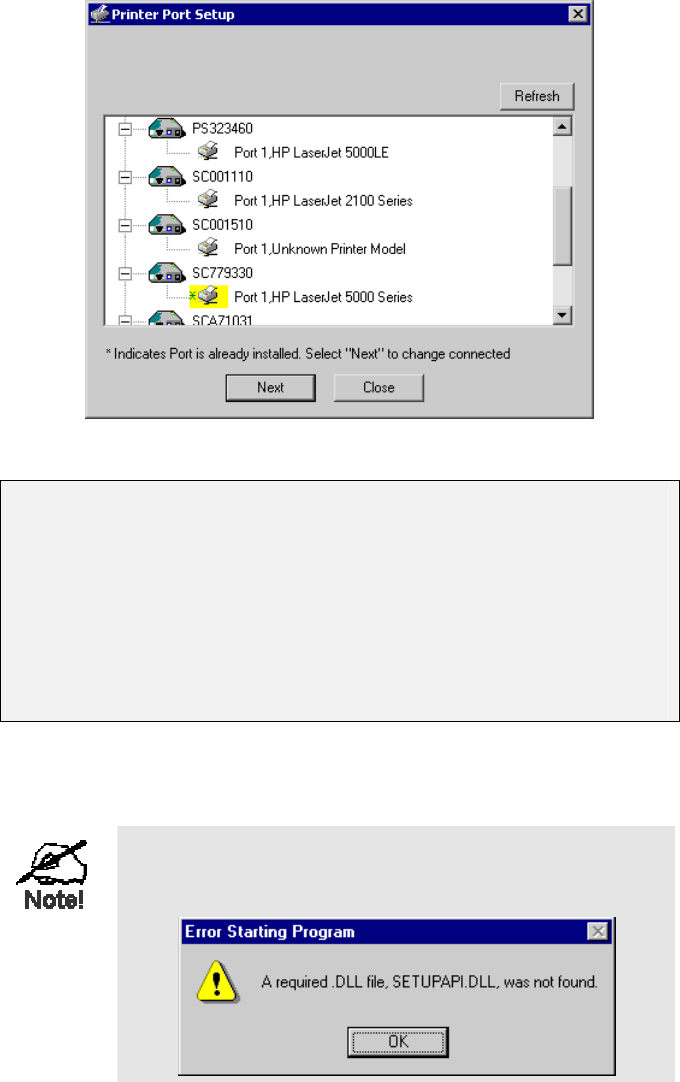
Figure 9: Print Port Setup (Peer-to-peer Printing)
If your Wireless Print Server is not listed:
• Click the "Refresh" button.
• Check that both the Wireless Print Server and the printer are properly
connected, and powered on.
• Check that the Wireless Print Server has been configured. (Use the Setup
Wizard on the CD-ROM.)
• If using TCP/IP, try installing the NetBEUI protocol. (See the earlier section
Checking your Network Protocols for details.). Then try again.
2. Select the desired port on a Wireless Print Server, then click Next. A pop-up message will
inform you if the port has been created successfully.
If you see the following error message, either install Internet
Explorer 4 or later, or follow the procedure in the "Trouble
Shooting - Windows" section of Chapter 8.
3. The printer port will be created, then a screen like the following will be displayed.
Page 17
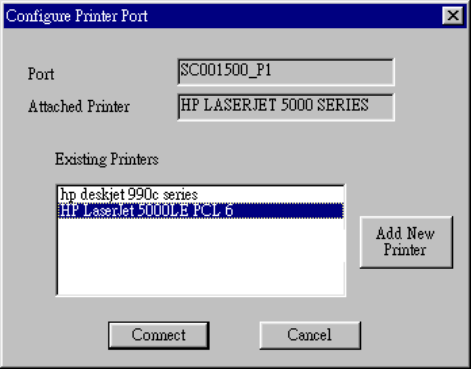
Figure 10: Configure Printer Port
4. Select the correct Windows printer in the Existing Printers list, and click the Connect
button.
If the correct printer type is not listed, click "Add New Printer" to run the Windows Add
Printer wizard. Step through the Wizard and install the required printer:
• Select the correct Printer Manufacturer and Model, or use the "Have Disk" option if
appropriate.
• We recommend changing the Printer name to indicate which device is on.
(e.g. HP2100 on SCA43600_P1)
• If prompted about Sharing the printer, do NOT enable Sharing.
• When the Printer installation is finished, it will be listed in the Configure Printer Port
screen above. Select it and click Connect.
5. Installation is now complete. You can now print using this printer.
• To install additional Printers, repeat steps 4.
• Use the Start menu to run this program in future. The default installation is Start -
Programs - PrintServer Driver - Print Driver Setup.
Note:
If using the Epson Spooler Manager, this program must be disabled, as follows:
1. Run the Epson Spooler Manager.
2. Select "Queue Setup" from the menu.
3. Click "Use Print Manager for this port".
4. Click "OK" to exit.
Management
• Print jobs can be managed like any Windows printer. Open the Printers folder (Start -
Settings - Printers) and double-click any printer to see the current print jobs.
• If the printer attached to the Wireless Print Server is changed, just run this program again,
and select the correct printer.
• To delete a port created by this setup program, use the Windows Delete Port facility:
• Right-click any printer in the Printers folder, and select Properties.
Page 18
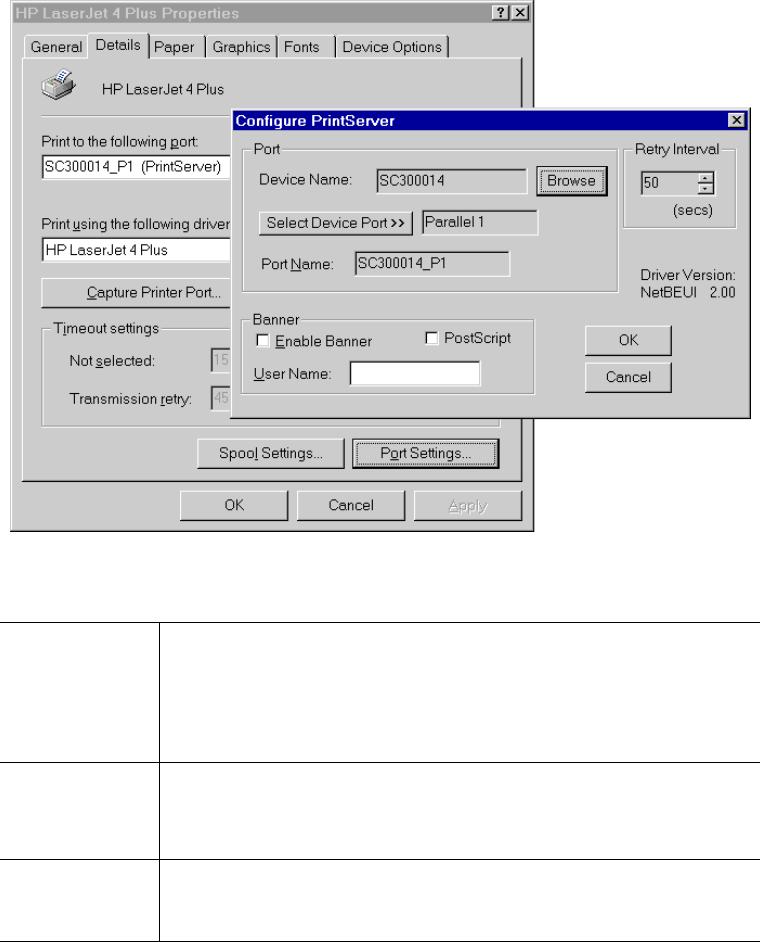
• Locate the Delete Port button. This button is on the Details or Ports tab, depending on
your version or Windows.
• If the Wireless Print Server's IP Address is changed, and you can no longer print, delete
the port (see procedure above) and re-install it.
Advanced Port Options
The options for the Peer-to-peer Printing are accessed via the Port Settings button.
Use Start - Settings - Printers to open the Printers folder, then right-click the Printer, and select
Properties. The Port Settings button is on the Details or Ports tab, depending on your version
of Windows.
An example screen is shown below:
Figure 11: Port Settings (Peer-to-peer Driver)
Items shown on this screen are as follows:
Port If desired, click Browse to select a different Wireless Print Server. If the
selected device has multiple ports, the Select Device Port button can be
used to select the port.
The Port Name can not be changed after installation. This name is
shown in the Printer's Properties.
Banner Check this option to print a banner page before each print job.
• If using a PostScript Printer, check the PostScript box.
• The User Name will be printed on the banner page.
Retry Interval Sets how often Windows will poll the Wireless Print Server to establish
a connection when the printer is busy. Increase this value if you get too
many warning messages.
Page 19
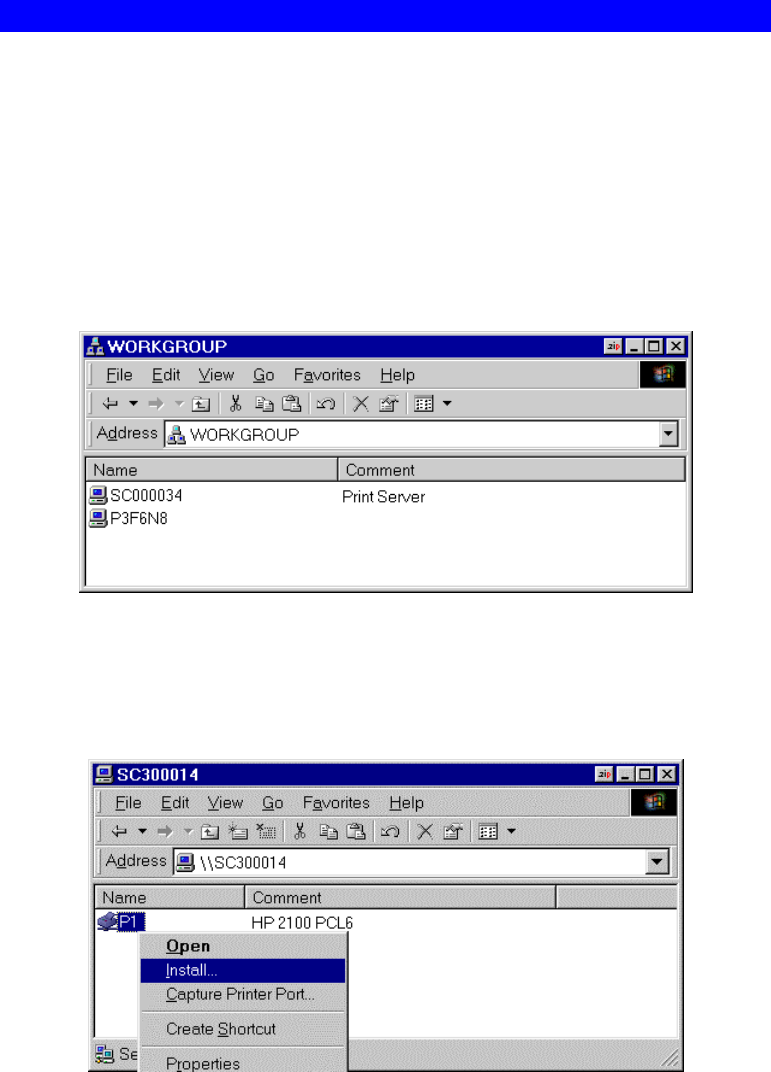
Windows SMB Printing
This method requires no additional software to be installed, but the NetBEUI or TCP/IP
protocol must be installed on your PC. Use the following procedure to install the Wireless Print
Server's printer as a Windows SMB network printer:
1. Double-click the Network Neighborhood icon on the desktop.
2. On the View menu, select Details.
3. Locate the desired Wireless Print Server, as shown below:
• If it is the same Workgroup as your PC, it will be listed on screen.
• If it is in a different workgroup, double-click Entire Network, then double-click the
appropriate Workgroup to open it.
Figure 12: Network Neighborhood
4. Double-click the Wireless Print Server icon to view a Printer icon for each printer port.
The "Comment" field may indicate what type of printer is connected to the port.
5. To install a printer, right-click the desired printer icon, and choose "Install", as shown
below. This will start the Add Printer wizard.
Figure 13: Install SMB Printer
6. Follow the prompts to complete the installation.
• For information about the question "Do you print from MS-DOS programs?", see
Printing from MS-DOS Programs below.
• Select the Printer Manufacturer and Model to match the printer connected to this port
on the Wireless Print Server, and complete the Wizard.
7. This printer will now appear in your Printers folder (Start - Settings - Printers) and can be
used like any other printer. However, SMB printing is not suitable for large complex print
jobs - you should use the Peer-to-peer Printing instead.
Page 20
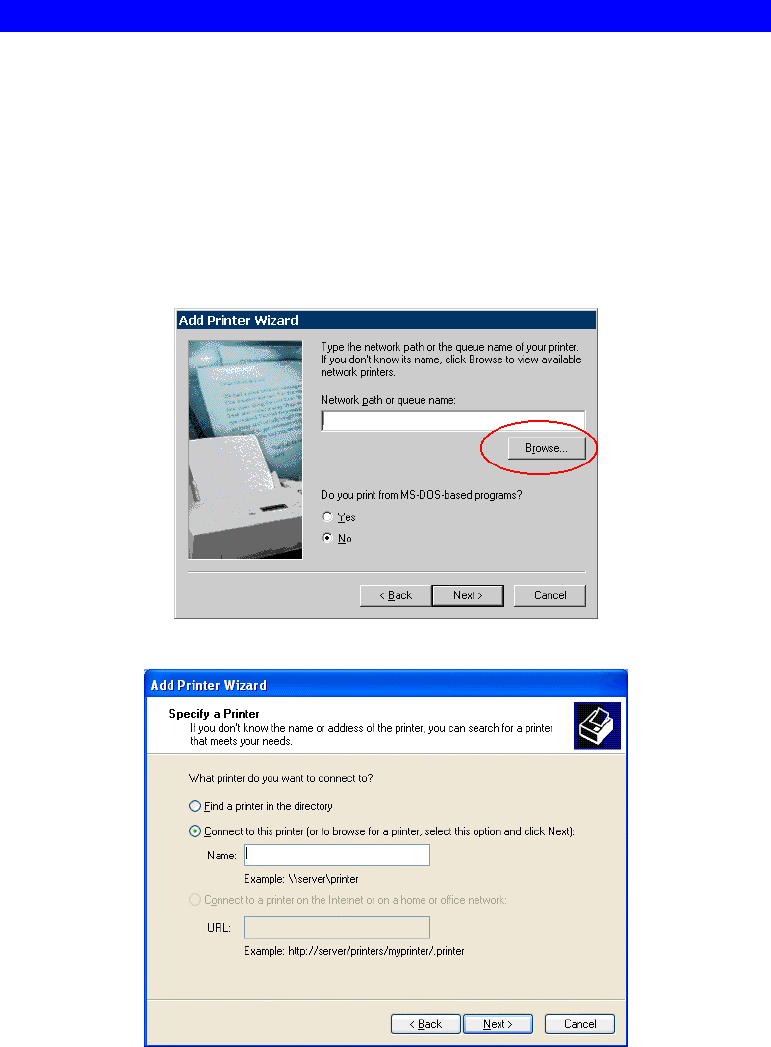
Windows with Server-based Print Queues
With a Server-based Print Queue, the Print Server is installed on an existing Network Server
(Windows, Unix, or NetWare), rather than on your PC. If your Network Administrator uses
this system, each Windows client must be set up as follows:
1. Open your Printers folder, and start the Add Printer Wizard.
2. When prompted, select Network Printer.
3. When prompted for Network Path or Queue Name:
• On Windows 98/ME, click the Browse button
• On Windows 2000/XP, leave the field blank and click Next
Figure 14: Network Path - Windows 98/ME
Figure 15: Network Path - Windows XP
4. Browse the network, and locate the Server and Printer (or Print Queue) which your
Network Administrator advised you to use.
5. Click OK, then Next.
6. Select the correct printer Manufacturer and Model, as advised by your Network
Administrator, and click Next.
7. Follow the prompts to complete the Wizard.
The new printer will be listed with any other installed printers, and may be selected when
printing from any Windows application.
Page 21

Macintosh (AppleTalk)
The Wireless Print Server supports AppleTalk (EtherTalk), PAP, ATP, NBP, ZIP and DDP
protocols, enabling Macintosh computers on the network to view and use the Wireless Print
Server as a regular AppleTalk printer.
Normally, no configuration is required.
Software Requirements
System 9.x OS or newer.
AppleTalk Setup
1. Click the apple icon and choose Control Panel - AppleTalk.
2. Ensure that Ethernet is selected under AppleTalk Connection.
3. Click Chooser. The Chooser panel will open.
4. Click on either the LaserWriter 8 icon (recommended) or the LaserWriter 7 icon.
LaserWriter 8 makes use of the fonts installed in the printer itself, so the printing response
time is quicker. LaserWriter 7 uses the fonts installed in the computer, which increases
network traffic and takes more printing time.
5. Choose a PostScript printer from the list.
6. Click Create and it will search PPD automatically.
7. Select a printer description from the list.
8. Click Select.
Configuration is now complete.
Printing
Printing with the Wireless Print Server installed in an AppleTalk network is identical to normal
printing. Just select File - Print and choose the desired printer.
Advanced Setup and Management
In a mixed Windows PC/Macintosh environment, you can use BiAdmin to configure the
Wireless Print Server. See Chapter 5 for details on installing and using BiAdmin.
Page 22
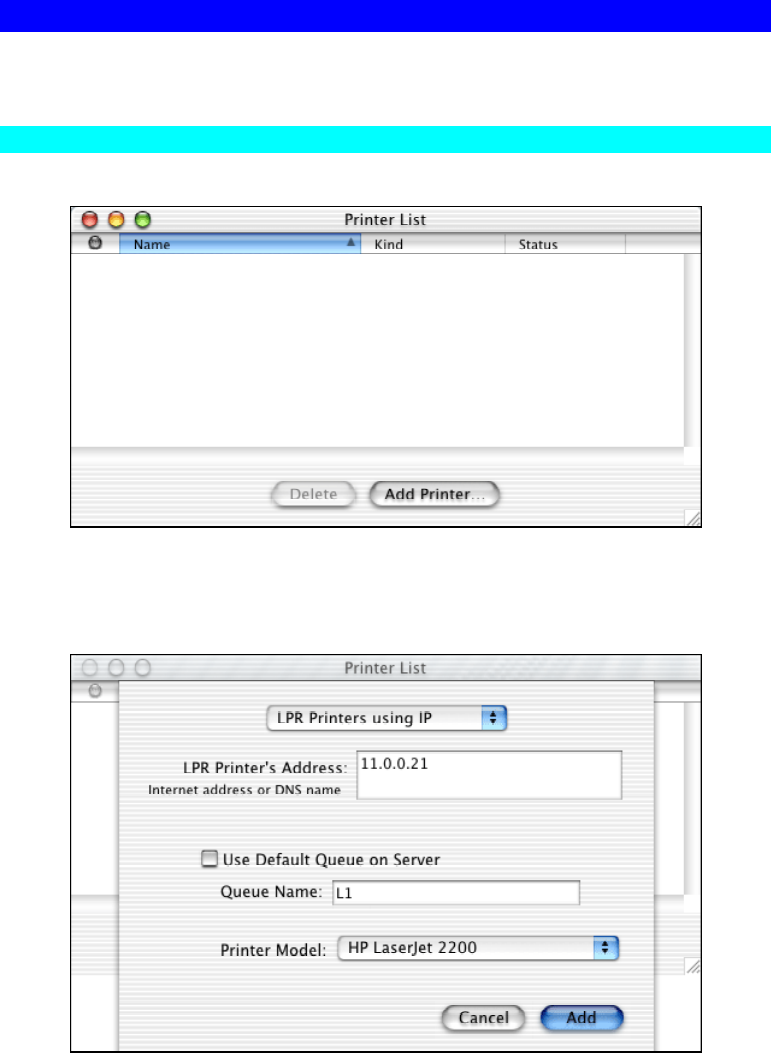
Macintosh OS X
If using LPR printing, you need to ensure the Wireless Print Server has a valid IP address
before configuring your Mac as follows.
LPR printing Setup
1. Select the Printer List icon.
Figure 16: Printer List
2. Click the Add Printer button.
3. Choose LPR Printers Using IP.
Figure 17: LPR Screen
4. Enter the IP address of the Print Server in the LPR Printer's Address field, and enter the
Queue Name (L1 for port 1, L2 for port 2 if the Wireless Print Server has 2 printer ports.).
5. Select the Printer Model from the drop-down list.
6. Click Add.
Configuration is now complete.
Page 23
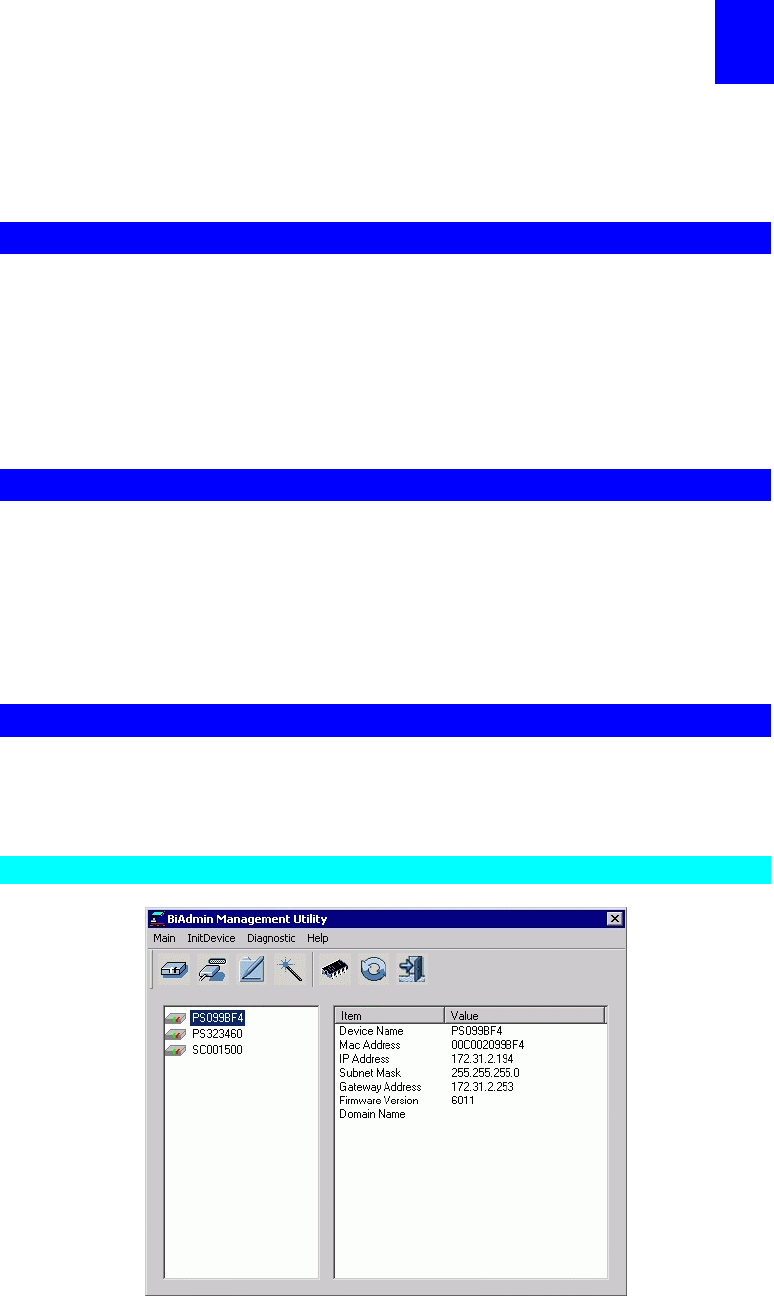
Page 24
Chapter 5
BiAdmin Management Utility
This chapter describes the installation and operation of the BiAdmin Configuration &
Management program.
5
Requirements
This program requires:
• Windows 95, Windows 98 or ME
• Windows NT 4.0, Windows 2000 or XP
Additional Recommendations:
• Screen resolution of 800 * 600 or greater.
Installation
Use the supplied CD-ROM. This CD-ROM will usually auto-run. If auto-run is disabled on
your PC, run the SETUP.exe program in the root folder.
• Select Installation and this will give you the options for BiAdmin installation
• BiAdmin is always installed if the Administrator option is chosen.
• If using the Custom option on the CD-ROM, select BiAdmin.
Operation
• Start the program by using the icon created by the setup program.
• When run, the program searches the network for all active Wireless Print Servers, then
lists them on screen, as shown by the example screen below.
Main Screen
Figure 18: BiAdmin Main Screen
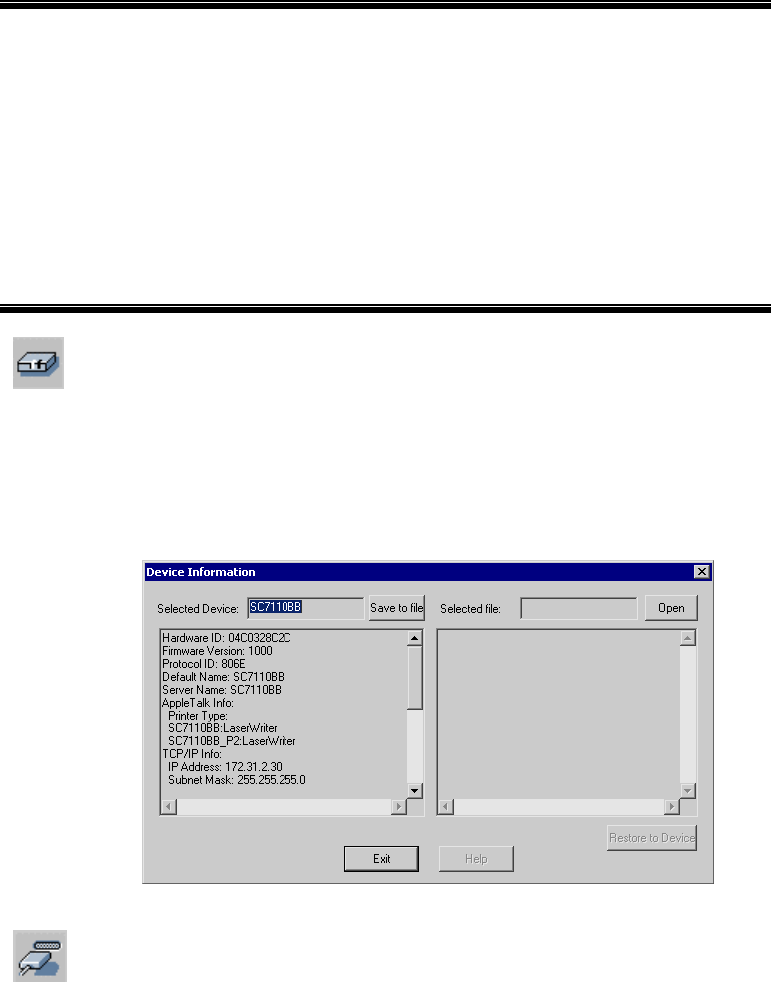
Device List
The left panel displays a list of all Wireless Print Servers found on the network. When a
Wireless Print Server is selected from the list, its details are displayed in the right panel.
Note: If the IP address is "Null", please click the Refresh icon to get the value again.
If the desired Wireless Print Server is not listed, try the following:
• Check that the device is installed and ON, then Refresh the list.
• If the Wireless Print Server is on another LAN segment, use the InitDevice - Attached
Remote menu option to locate and display the Wireless Print Server.
Icons
Device Status
Menu equivalent: Main - Device Status
All of the settings for the current device are displayed in a read-only scrollable list
in the left panel.
You can use the "Save to File" and "Restore to Device" buttons on this screen to
save a copy of the selected device's CONFIG file to your PC, or restore a
previously saved file to the selected Wireless Print Server.
Printer Status
Menu equivalent: Main - Printer Status
After selecting this icon, a Detail button will be available to show more
information about the printer.
Page 25
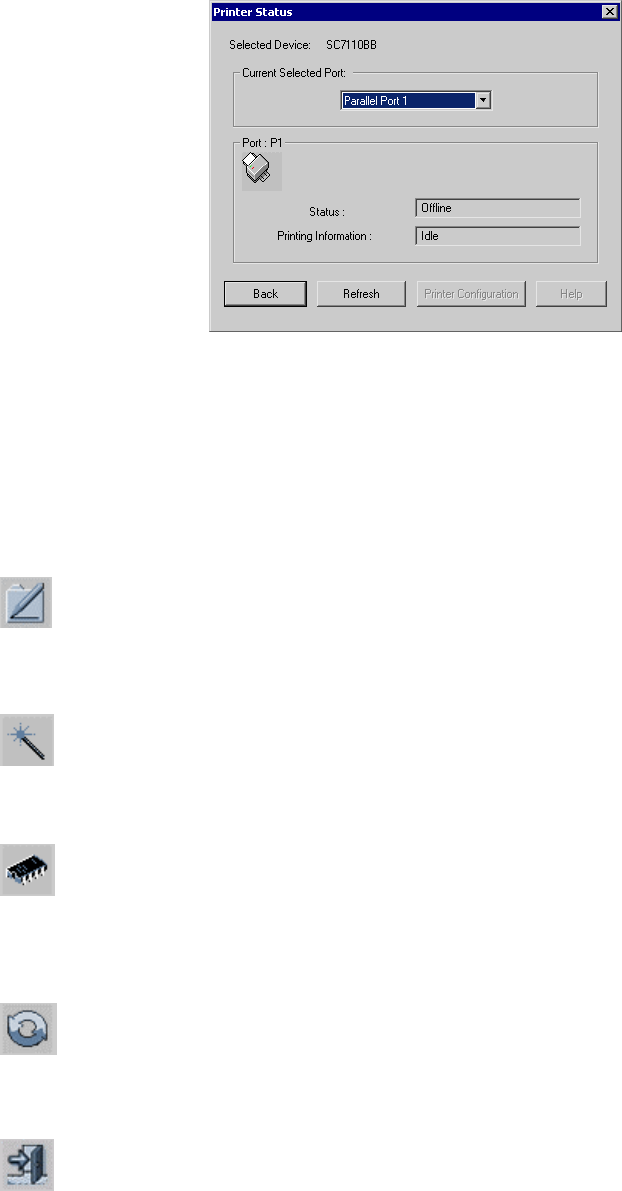
Select the desired port from the drop-down list to display the current status of the
printer attached to the port. Possible states are:
• Status - On-line, Off-line, or Out of Paper
• Printing Information - Idle, Printing
If the printer is Bi-directional, and is not busy, the Configuration button will be
available, allowing you to change the configuration of the attached printer. This
button will be grayed out if the printer does not support this option, or if the
printer is busy printing.
Configuration
Menu Equivalent: Main - Configure
This option allows you to configure the selected Wireless Print Server.
See the following section for details.
Wizard
This Wireless Print Server Wizard allows you to do the basic configuration for
the selected device. The screens are similar to the Wizard run from the CD-ROM,
as described in Chapter 3.
Upgrade
Menu Equivalent: Main - Upgrade
This option allows you to upgrade the firmware for the selected Wireless Print
Server. Before using this option, you need to obtain the .BIN file for the firmware
upgrade, and copy it to the same directory as BiAdmin.
Refresh
Menu Equivalent: Main - Refresh
Select this icon to update the Wireless Print Server device listing after changing
the name or IP Address.
Exit
Menu Equivalent: Main - Exit
Exit the BiAdmin program. This does not save any changes you have made; you
must Save to Device on each screen.
Page 26

Menus
Main Menu
Device Status Same as Device Icon.
Printer Status Same as Printer Status Icon.
Configure Same as Configure Icon.
Upgrade Same as Upgrade Icon.
Refresh Same as Refresh Icon.
Exit Same as Exit Icon.
InitDevice Menu
Reset Device This will cause the device to reboot. This should be done after
making any configuration changes, or if the device stops responding
after some problems.
Restore to Factory
Default
This will restore ALL device values to their factory defaults. To
restore only the current screen, use the Set to Default button on the
screen.
Attached Remote This is used to connect to a Wireless Print Server device on another
LAN segment. You need to know the IP address of the remote
Wireless Print Server.
If your LAN does not have a Router, you can ignore this option.
Connected
Protocol
This option allows you to designate which LAN protocol will be used
for communication between the selected device and this application.
You should select ONE protocol only.
Diagnostics menu
Print Test Page Use this option to print a test sheet from the selected Wireless Print
Server port. The test print out will include status information.
Configuration
When the Configuration icon is clicked, or the Configure option on the Main menu is selected,
a tabbed window will open. The tabs available will vary depending on the Wireless Print
Server model selected. The possible tabs are:
• System
• TCP/IP
• AppleTalk
• NetBEUI
• Internet Printing
• Port
• Wireless
• SNMP
Page 27
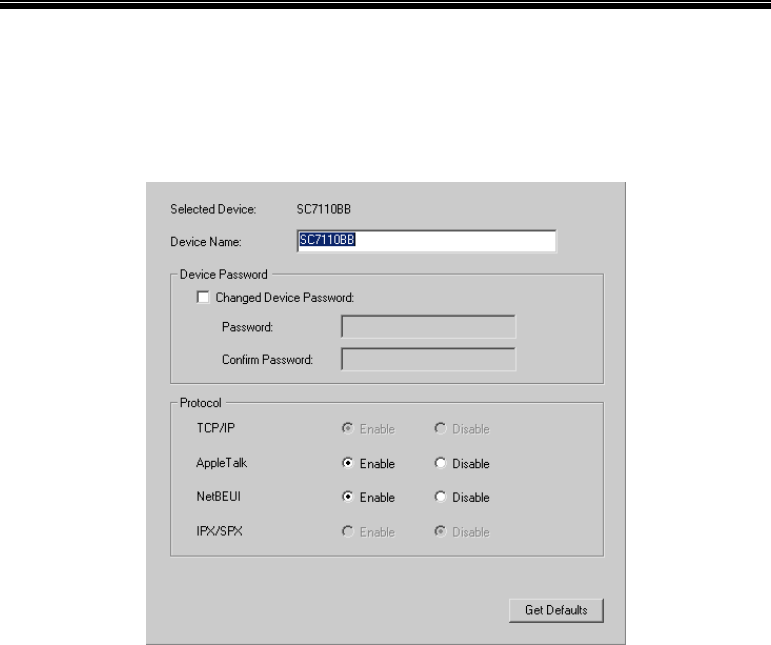
System Tab
This screen allows you to:
• Change the name of the Wireless Print Server.
• Change the "Password" for the Wireless Print Server.
• Set the Network Protocols used the selected Wireless Print Server. (Any protocols not
used on your LAN may be disabled. This may improve performance.)
Figure 19: System Screen
Page 28
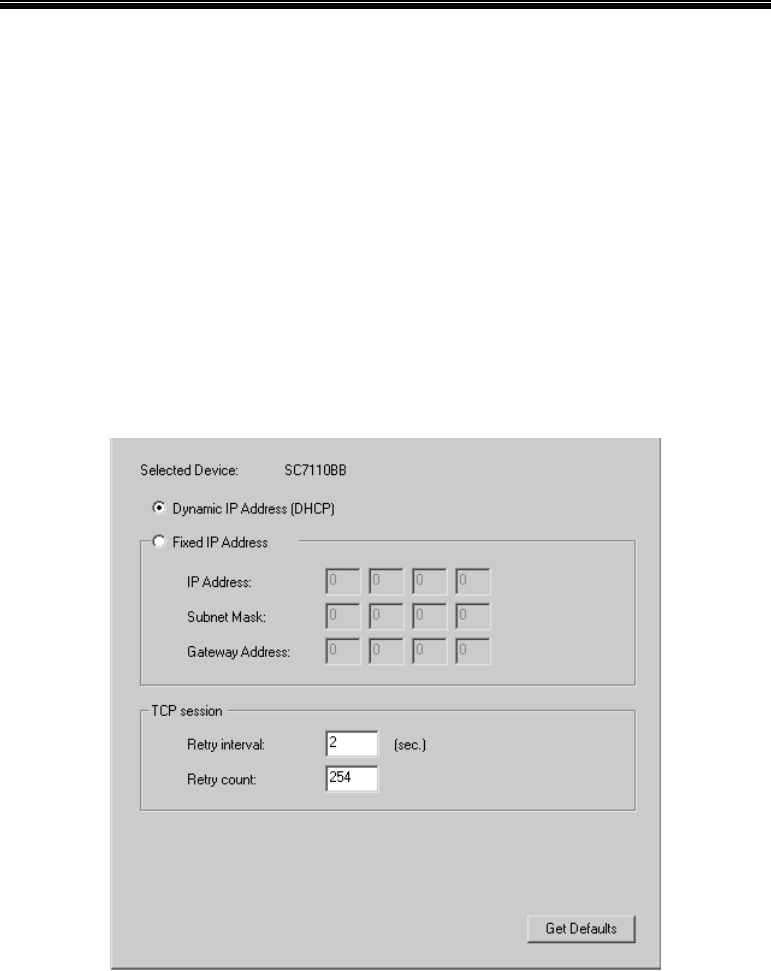
TCP/IP Tab
Selecting this tab will allow configuration for the TCP/IP network protocol. The basic options
are:
• Dynamic IP Address (DHCP) - The IP address is obtained automatically, from a DHCP
Server on your network.
• Fixed IP Address - You must enter the IP address, Subnet Mask, and Gateway Address.
• IP Address - Select an unused IP address from the address range used on your LAN.
• Subnet Mask - Use the same values as PCs on your LAN (or on the same LAN
segment, if you have a Router).
• Gateway - Use the same values as PCs on your LAN (or on the same LAN segment, if
you have a Router).
Some Wireless Print Server models also support the Auto-IP function. If the Wireless Print
Server is set to Dynamic IP Address, but there's no DHCP server found on the network, the
Wireless Print Server will get an IP from the range of 169.254.1.1 ~ 169.254.254.254
automatically. In this case, even though the Wireless Print Server was initialized with an Auto-
IP, it will change to DHCP whenever a DHCP server is detected.
Figure 20: TCP/IP Screen
The TCP session parameters should only be changed if advised to do so by your Network
Administrator or Print Server Technical Support.
Page 29
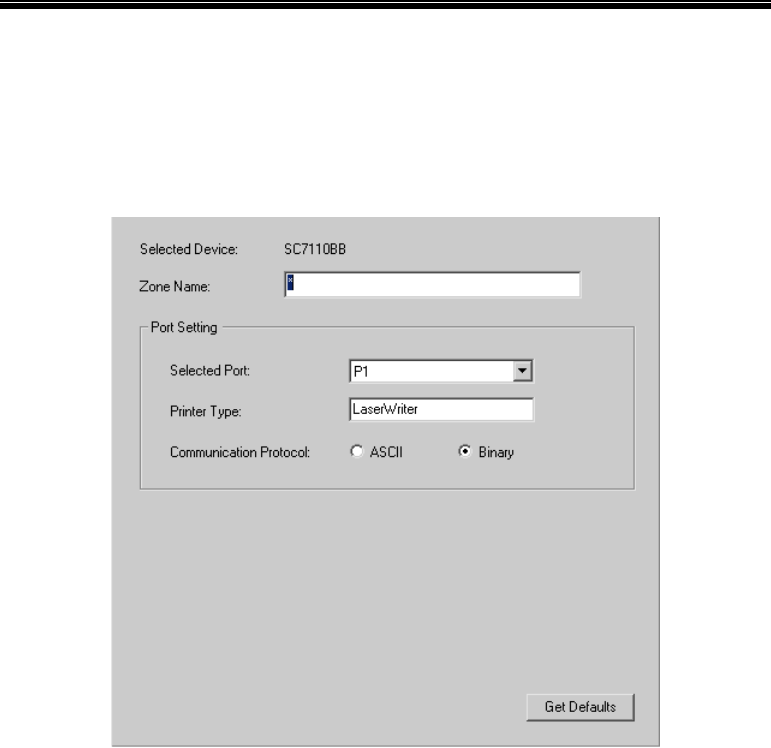
AppleTalk Tab
Generally, no Wireless Print Server configuration is required in order to use AppleTalk.
This screen allows you to:
• Set the Zone Name field to determine which Apple systems can gain access to this printer.
• The Printer Type field is used to describe the printer driver used for each port.
• Set Communication Protocol to ASCII or Binary. This must match the setting on the
Apple computer systems using the Wireless Print Server.
Figure 21: AppleTalk Screen
Page 30
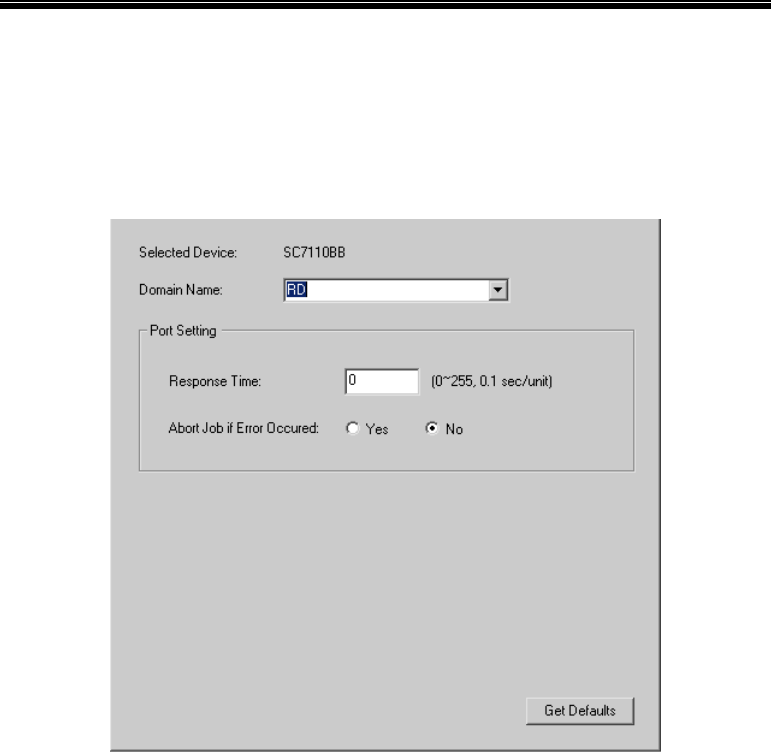
NetBEUI Tab
This screen allows you to:
• Choose the Domain name for the selected Wireless Print Server.
• Set how fast jobs are sent to the printer by using the Response Time field.
• Set the desired option for the Abort Job if Error Occured setting.
• YES causes a print job to be terminated if a printing error occurs.
• NO (default) will try to continue but may cause print errors.
Figure 22: NetBEUI Screen
Page 31
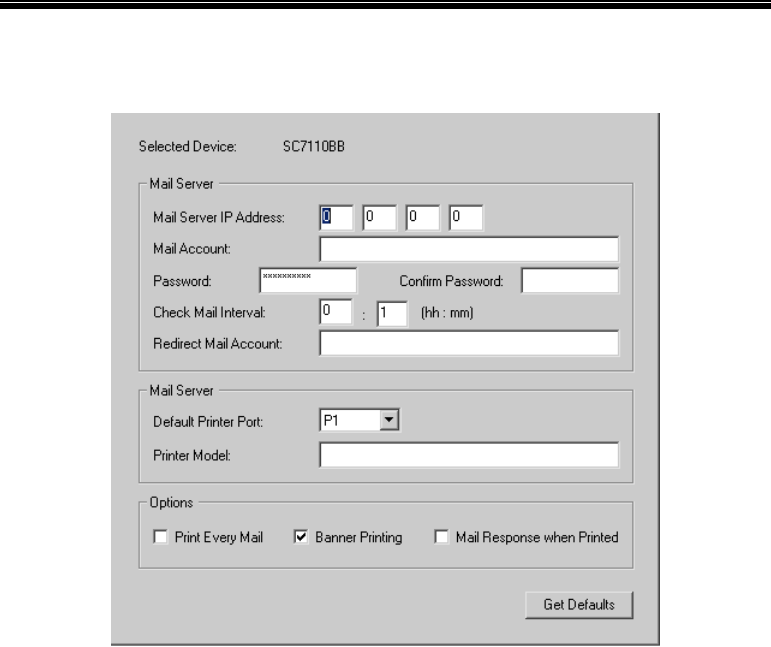
Internet Printing Tab
The Internet Printing feature available on some models, allows you to send print jobs to the
Print Server using Internet E-mail.
Please see Internet Mail Printing Configuration for details of using this feature.
Figure 23: Internet Printing Screen
Page 32
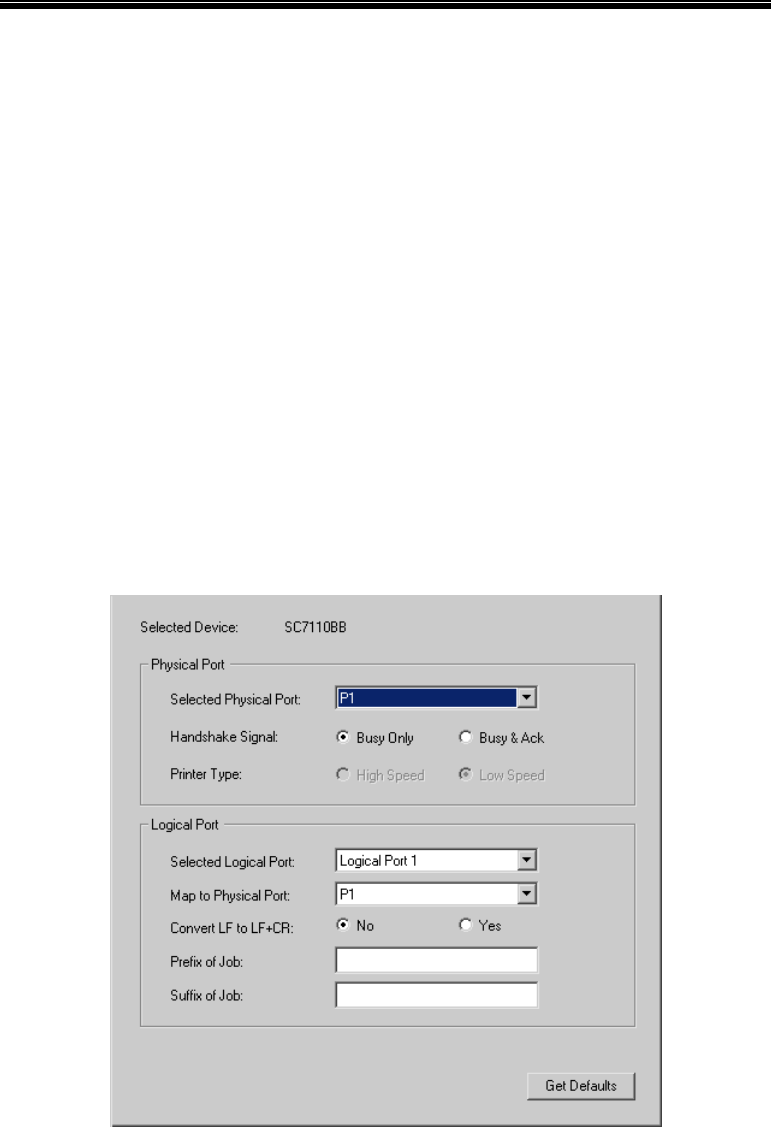
Port Tab
This screen has 2 panels - Physical Port and Logical Port.
Physical Port
The following settings are available:
• Selected Physical Port - Select the Physical Printer Port you wish to configure.
• Handshake Signal - Select Busy Only or Busy & Ack for the Physical Port.
• Printer Type - Select High Speed or Low Speed for the Printer Type.
Logical Port
Logical Ports (printers) can be used in the Unix environment. The following settings are
available:
• Selected Logical Port - Select the Logical Printer Port you wish to configure.
• Map to Physical Port - Select the physical Printer Port which the Logical printer will use.
• Convert LF to LF+CR - If checked, LF (line feed) characters are changed to CR+LF
(carriage return + line feed).
• Prefix of Job - The printer control string (in hex) to be sent to the printer before each print
job. This string cannot exceed 15 characters.
• Suffix of Job - The printer control string (in hex) to be sent to the printer after each print
job. This string cannot exceed 15 characters.
Figure 24: Port Screen
The Get Defaults button will reset all settings to their factory-default values.
Page 33
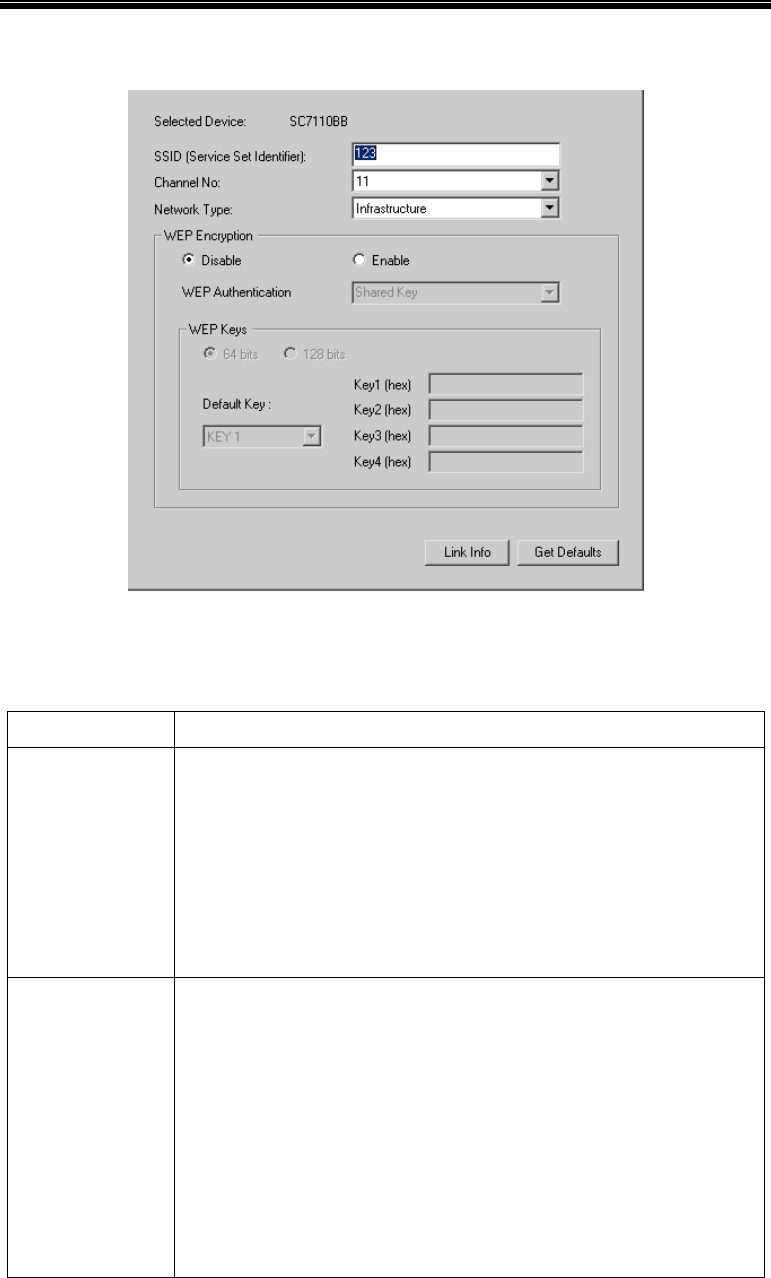
Wireless Tab
This tab will be displayed if the selected device has the capability to serve as a Wireless
Stations for your LAN.
Figure 25: Wireless Screen
Change the settings to suit your environment. Generally, you must match the settings of other
'Wireless stations. The available settings are described below.
Selected Device This shows the name of the Print Server.
SSID • If using an ESS (Extended Service Set, with multiple access
points) this ID is called an ESSID (Extended Service Set
Identifier).
• To communicate, all Wireless stations MUST use the same
SSID/ESSID. Change this value, or change the other Wireless
stations, to ensure each Wireless station has the same value.
• The default value is "null", so the Wireless station can join any
Ad-hoc group.
Note! The SSID is case sensitive.
Channel No The effect of this setting depends on the Network Type setting:
• In Infrastructure mode, this setting has no effect. The Channel is
selected automatically, to match the Channel used by the Access
Point.
• In Ad hoc mode, all Wireless stations MUST use the same
Channel number.
• In 802.11 Ad-hoc mode, Wireless stations will scan all Channels
looking for compatible groups to join. The Channel setting is used
as a default Channel.
If you experience interference (shown by lost connections and/or slow
data transfers) you may need to experiment with different channels.
Page 34

Network Type Select the correct value for your Wireless LAN.
• 802.11 Ad-hoc mode is used when there is no Wireless Access
Point, and each Wireless station communicates directly with other
Wireless stations. This is the current standard, and should be used
if possible.
• Ad-hoc mode is used when there is no Wireless Access Point, and
each Wireless station communicates directly with other Wireless
stations. This is the older standard.
• Infrastructure mode is used when each Wireless station connects
to the Wireless Access point. This also provides access to the
wired LAN.
WEP Encryption
WEP Disable/
Enable
If Disabled (default), data is NOT encrypted before being transmitted.
If Enabled, you must provide either the 64 Bit key table or the 128 Bit
keys. The key is used to encrypt the data before transmission.
WEP
Authentication
Options are "Open System" or "Shared Key".
Select the method (Open System or Shared Key) used by other
Wireless Stations.
Shared Key is more secure than Open System.
64 Bits/128Bits Select "64Bits" or "128Bits" as required to match other Wireless
stations on your WLAN. Stations which do not have matching settings
will be unable to communicate.
128 bit Keys are more secure than 64 bit Keys.
Key Table Enter the key values to match other Wireless stations on your WLAN.
This table is used when Encrypting and Decrypting data. All stations
always transmit data encrypted using their default key (see below).
The key number (1, 2, 3, 4) is also transmitted. The receiving station
will use the key number (1, 2, 3, 4) to determine which key value to
use for decryption. If the key value does not match the transmitting
station, decryption will fail.
The easiest way to ensure there are no problems is to have every
Station, including the Access Point, use the same key table (all entries
identical). Then, it does not matter which key is used as the default
key.
Default Key Select the key you wish to be the default. Transmitted data is
ALWAYS encrypted using the Default Key; the other Keys are for
decryption only.
Page 35
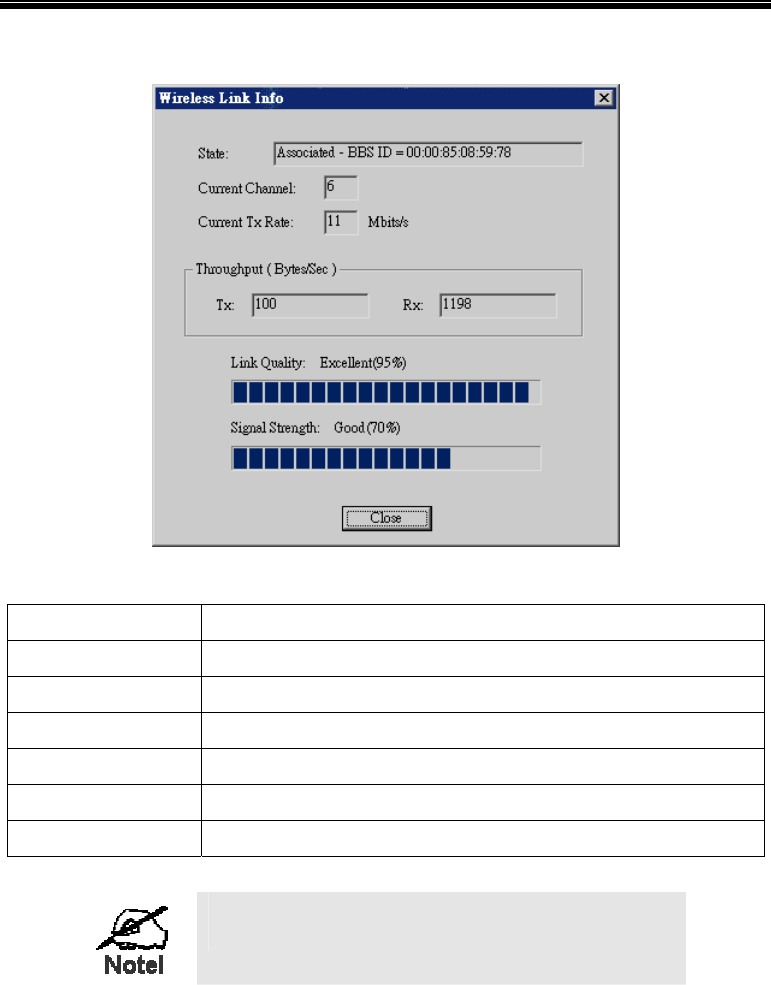
Wireless Link Info Screen
After clicking the "Link Info" button on the Wireless Screen, a screen like the example below
will be shown.
Figure 26:Link Info Screen
State This indicates which access point is currently in use.
Current Channel The current channel which has been used.
Current TX Rate The current transmitting speed.
Throughput (Tx ) This will show how much data has been transmitted per second.
Throughput ( Rx ) This will show how much data has been received per second.
Link Quality This indicates the quality of the Wireless connection
Signal Strength This indicates the strength of the Wireless signal being received.
The "Link Quality" and "Signal Strength" data is not
available if using "Ad-hoc" or "802.11 Ad-hoc" mode.
Page 36
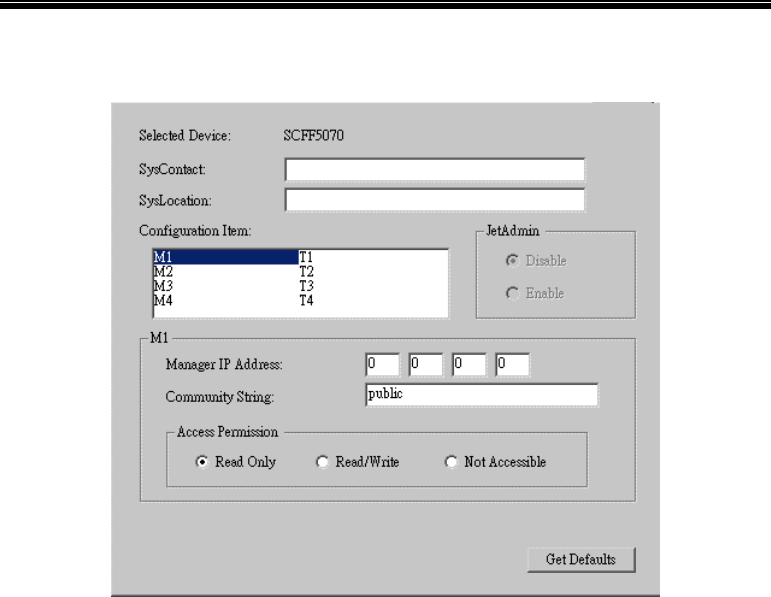
SNMP Tab
Configuration is only required if using the Simple Network Management Protocol.
Refer to Configuring the Wireless Print Server for SNMP in Chapter 7 for details.
Figure 27: SNMP Screen
Page 37